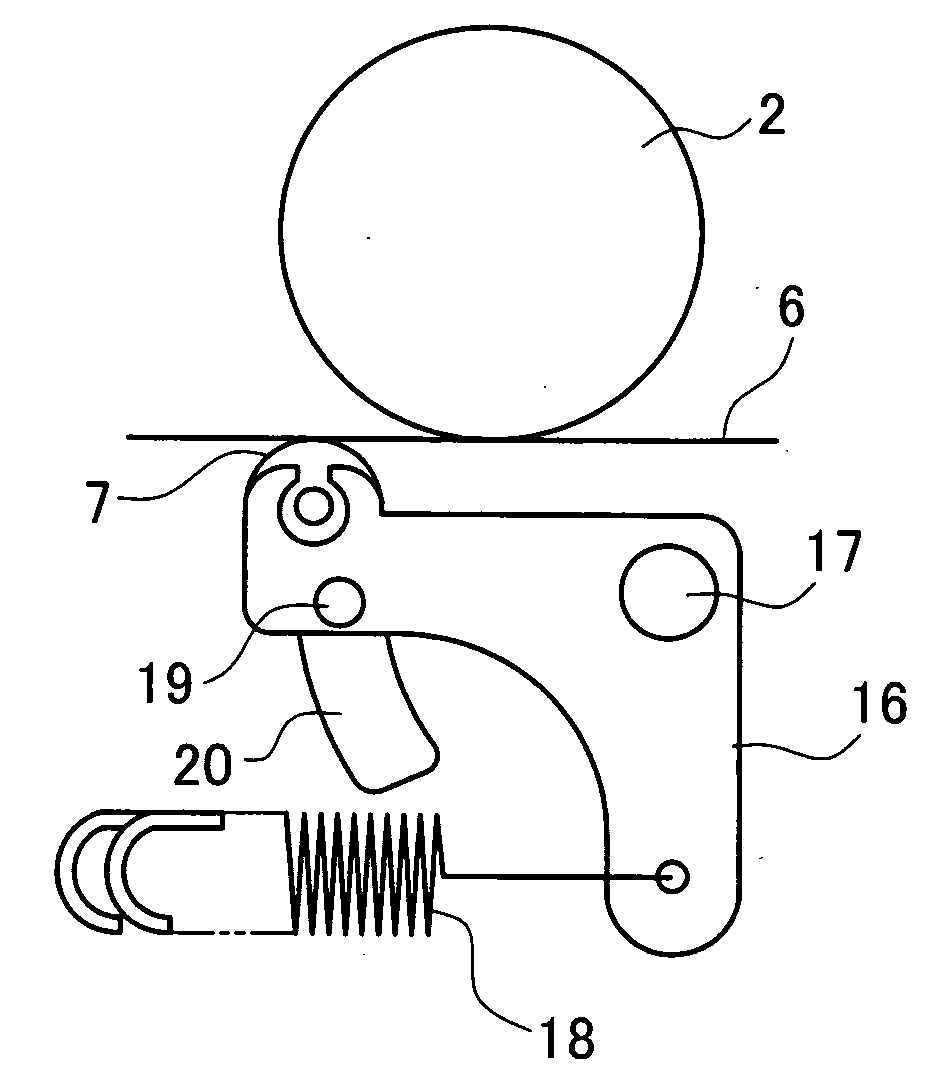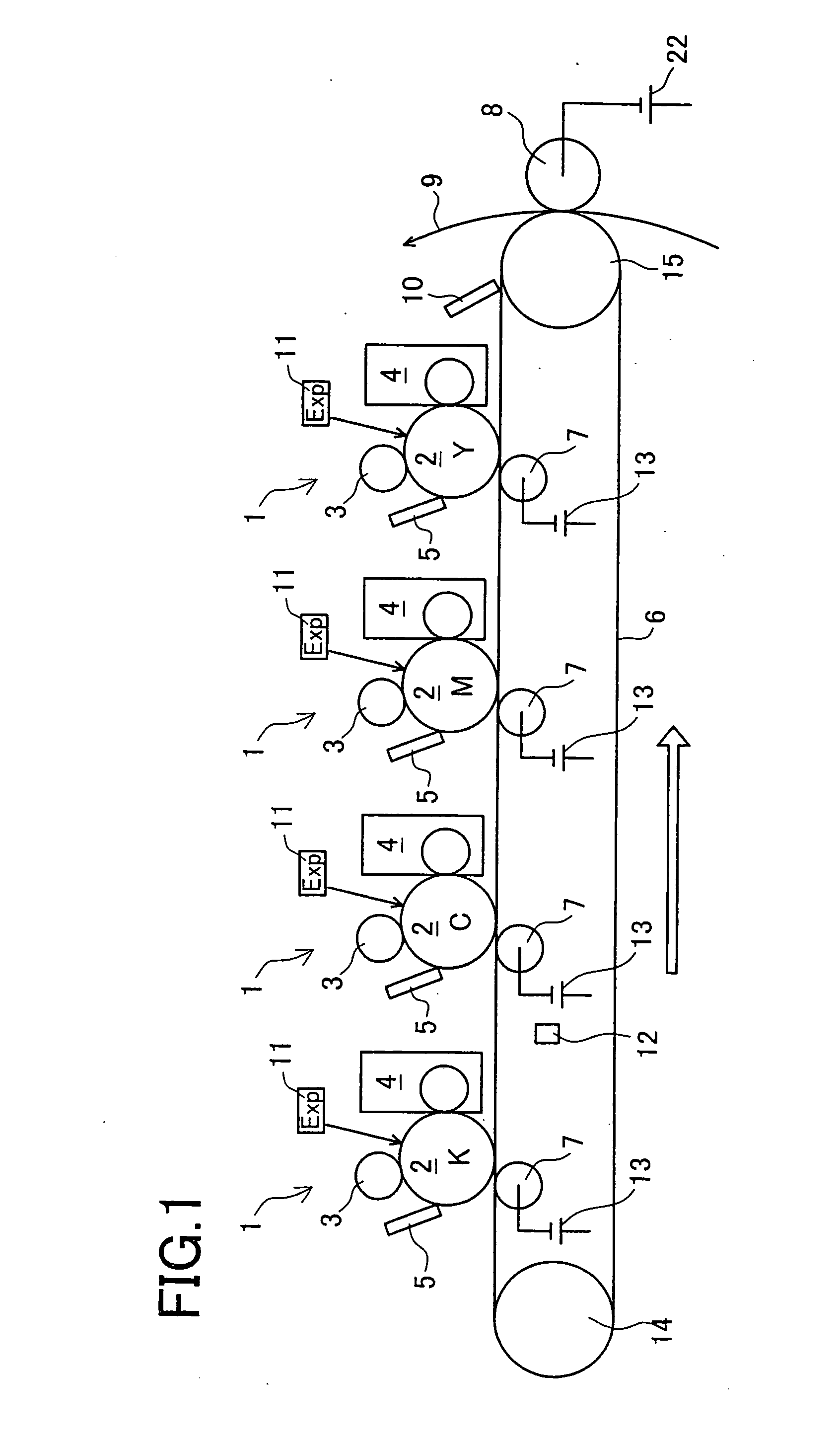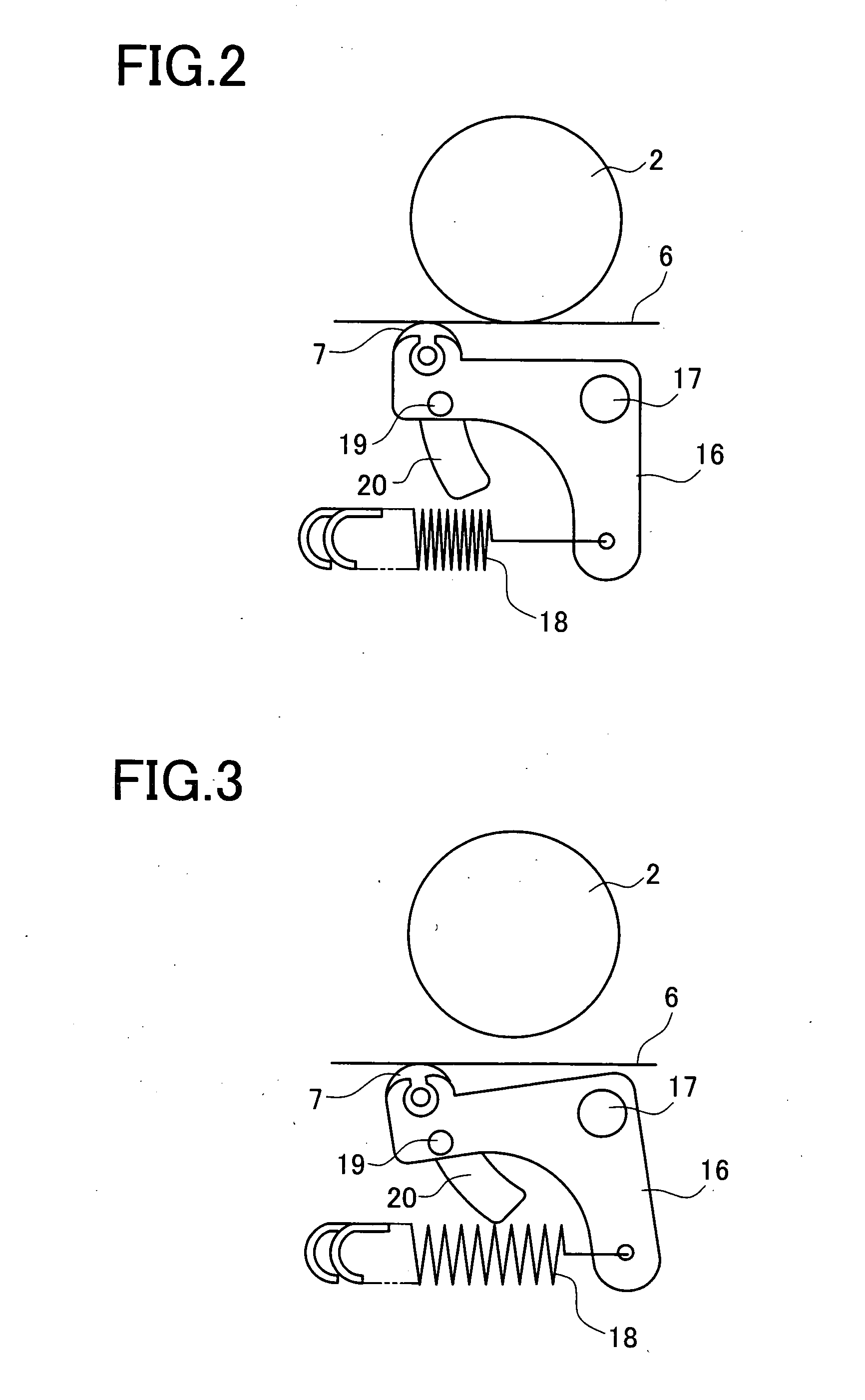Image forming apparatus and method of abrading photoconductor of the apparatus
- Summary
- Abstract
- Description
- Claims
- Application Information
AI Technical Summary
Benefits of technology
Problems solved by technology
Method used
Image
Examples
first example
[0041]A first mode of a first example is explained below. In the first mode, each image forming unit 1 is controlled according to a timing chart shown in FIG. 5 after completion of image formation. In FIG. 5, a term “Photoconductor Contact” indicates a contact or separate condition between the photoconductive drum 2 and the intermediate transfer belt 6. “ON” represents a contact state (a state in FIG. 2) and “OFF” represents a separate state (a state in FIG. 3). This switching is of course based on movement of the aforementioned lever member 16.
[0042]A term “Photoconductor Speed” in FIG. 5 indicates the circumferential speed of the photoconductive drum 2 during rotation. A term “Transfer Speed” indicates the traveling speed of the intermediate transfer belt 6. A term “Secondary Transfer” indicates an ON / OFF state of bias voltage to the secondary transfer roller 8. Each of those parameters is also applied to timing charts shown in FIG. 6 and subsequent figures. As shown in FIG. 5, th...
second example
[0069]The aforementioned first example shows the abrasion of the photoconductive drum 2 to be performed only with the intermediate transfer belt 6. On the other hand, the second example shows the abrasion of the photoconductive drum 2 to be performed with the charge roller 3 in addition to the intermediate transfer belt 6.
[0070]FIG. 7 is a timing chart showing a process in the first mode of the second example to be performed after an end of image formation. In FIG. 7, “Charge Speed” indicates the circumferential speed of the charge roller 3 during rotation (the same applies to FIG. 8). Other conditions “Photoconductor Contact”, “Transfer Speed”, and “Secondary Transfer” are omitted from FIG. 7 for convenience of illustration but they are the same as those in FIG. 5. In this case, “Photoconductor Contact” represents only a contact state between the photoconductive drum 2 and the intermediate transfer belt 6. The photoconductive drum 2 and the charge roller 3 remain in contact with ea...
PUM
 Login to view more
Login to view more Abstract
Description
Claims
Application Information
 Login to view more
Login to view more - R&D Engineer
- R&D Manager
- IP Professional
- Industry Leading Data Capabilities
- Powerful AI technology
- Patent DNA Extraction
Browse by: Latest US Patents, China's latest patents, Technical Efficacy Thesaurus, Application Domain, Technology Topic.
© 2024 PatSnap. All rights reserved.Legal|Privacy policy|Modern Slavery Act Transparency Statement|Sitemap



